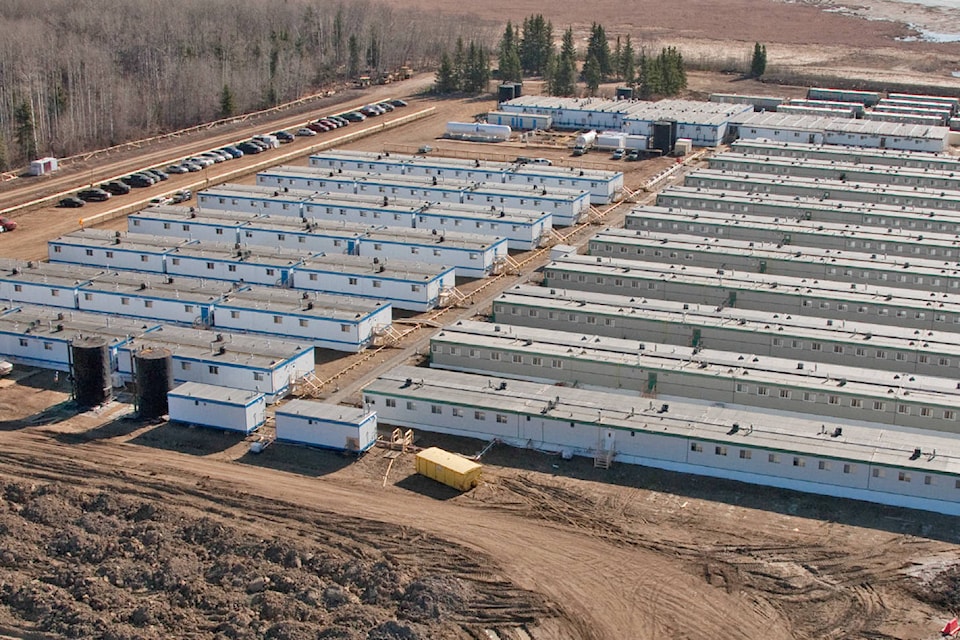As preparations for TC Energy’s Coastal GasLink (CGL) pipeline project pick up steam across the region, more details of how construction will pan out come into view.
Contractors doing camp clearing and construction, and building the actual pipeline will shop locally for as many of their work needs as possible, as Suzanne Wilton, TC Energy spokesperson told Lakes District News.
Wilton cited the example of contractors in neighbouring Houston, where just over 100 workers are housed in the 9A camp southwest of the community.
“I spoke with one of our contractors and he gave examples in Houston of tire shops where they’ll buy their tires, both shops. They’re already utilizing those tire shops,” Wilton said.
“They’re eating locally, including at Happy Jack’s. Another example is Brewstir’s, [where] they’ve changed their hours to have food available at 4 a.m. when the crews head out to the site. If they can’t find what they need in Houston they’ll go to Smithers, if they can’t find it there they’ll go to Prince George.”
Another camp - the Huckleberry Multi-Use Site - will be built in the near future about 25 kilometres southwest of Houston. Up to 800 workers are estimated to be housed there during the pipeline project.
READ MORE: RDBN approves Huckleberry camp build permit
While the camp near Burns Lake - the 7-Mile Road Multi-use Site - hasn’t been built yet, Wilton said that TC’s mandate on local shopping remains the same, and when when workers start arriving in the area they’ll buy local products and services.
Clearing work on that camp has started and once the camp is ready it expected to accommodate 600 workers at peak times.
READ MORE: Prep work starts on Burns Lake pipeline camp
Once up and running, that camp and others will meet their electricity needs through fuel generators.
“Work force accommodation is mostly powered by generators. The Houston camps are being powered by generators,” Wilton said.
While generators burn fuel, TC undertook its Best Available Technology Economically Achievable (BATEA) assessment, “a standard used to mitigate emissions during construction. Generators were found to be the best option in this case, considering equipment purpose, proximity to grid and reliability.”
The 7-Mile Rd. site, which sits just east of Highway 35 is located about 2 kilometres from the closest transmission line.
“These are temporary use sites and the development of the infrastructure necessary to connect to the grid would require further land disturbance and be less efficient, both environmentally and economically.”
The majority of pipeline jobs will last for the four-year construction period, but TC said that after it’s finished there will be 16 to 35 permanent positions created in pipeline monitoring and maintenance.
In addition to jobs, local governments along the pipeline route - from Dawson Creek to Kitimat - will receive around $20.88 million in annual property tax benefits. The Regional District of Bulkley-Nechako’s share is $8.36 million.
Other long-term benefits include the 20 agreements with First Nations along the pipeline route. Those comprise liaison committees and contracting plans but it was not clear if they last beyond the pipeline construction completion date.
TC plans to continue into the future its community investments, such as the $135,000 Burns Lake fire training facility that TC helped fund.
LOOK BACK: New fire training facility holds grand opening
The company will also continue funding scholarships across the province.
“In 2018 through our TC Energy scholarships program 28 scholarships were given, valued at $68,000. In 2019 there were 125 scholarship opportunities available, 26 community leaders scholarships, 83 Indigenous legacy scholarships and 15 trades scholarships.”
Blair McBride
Multimedia reporter
Send Blair an email
Like Lakes District News on Facebook
